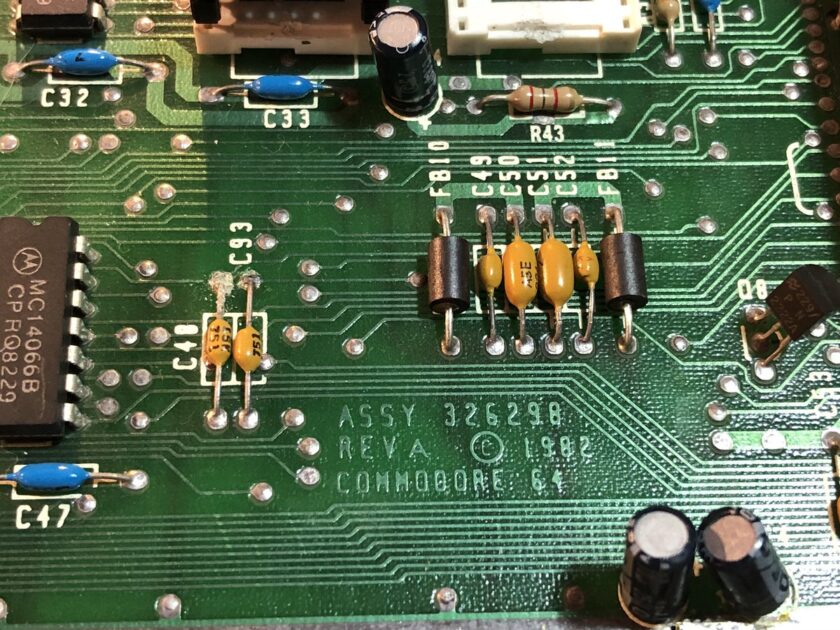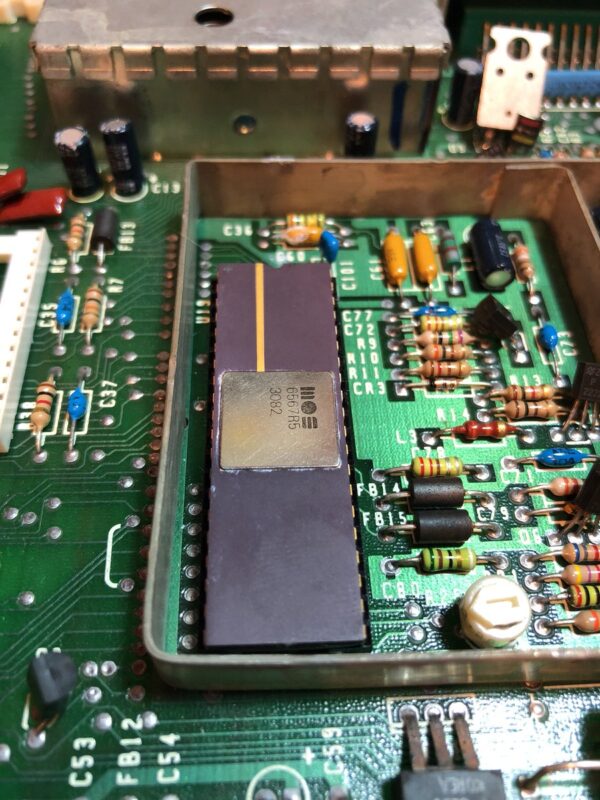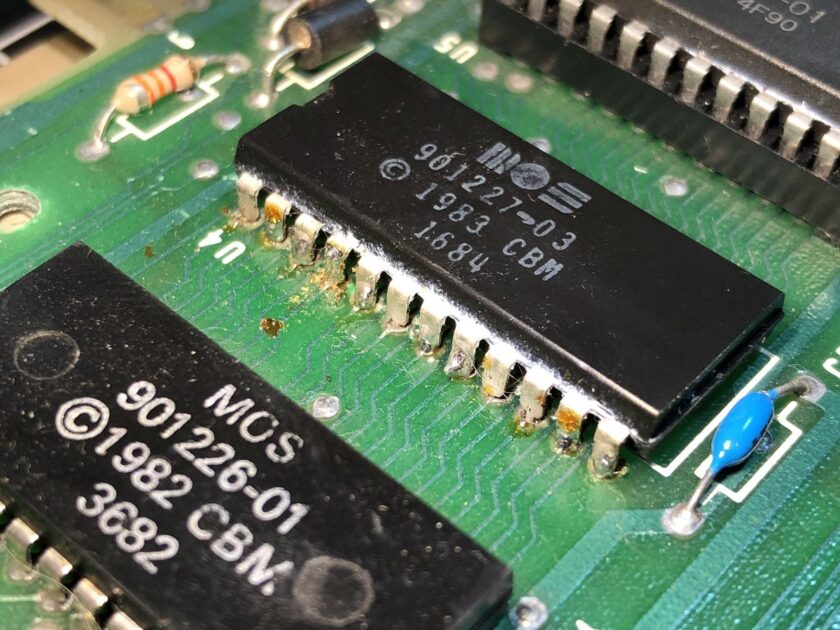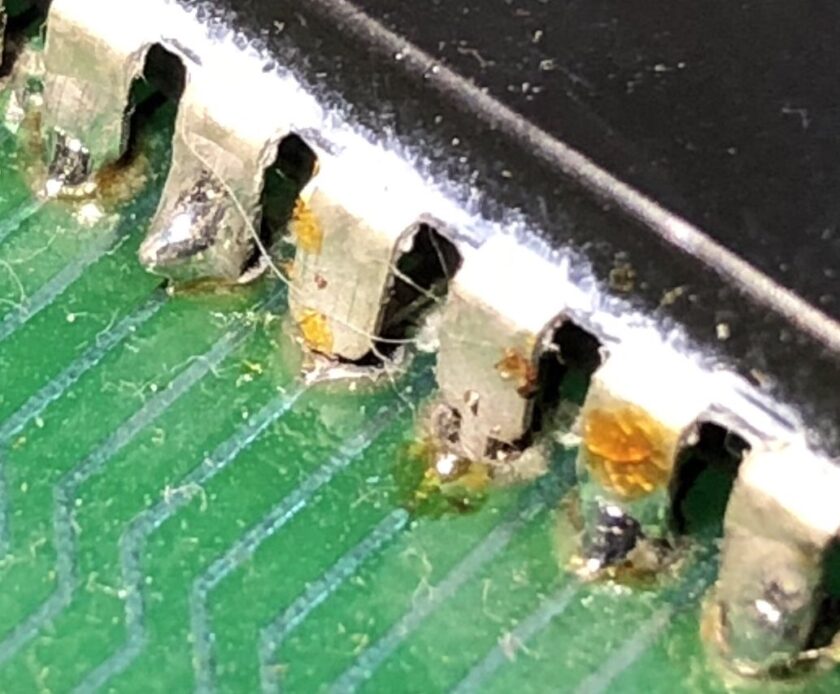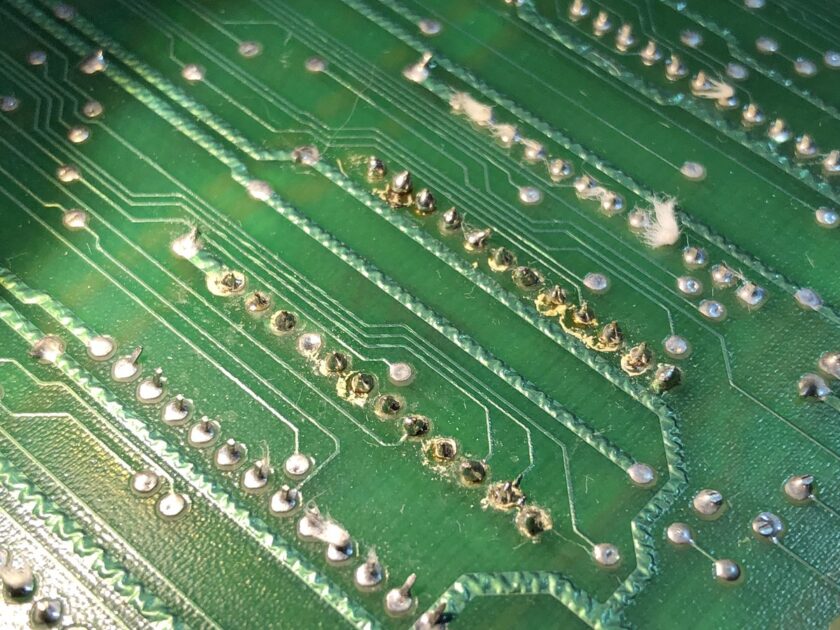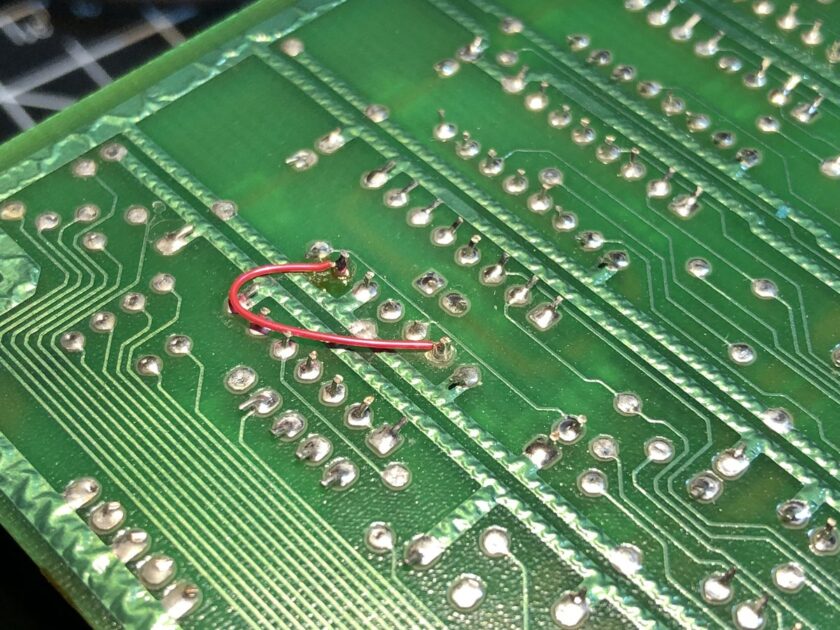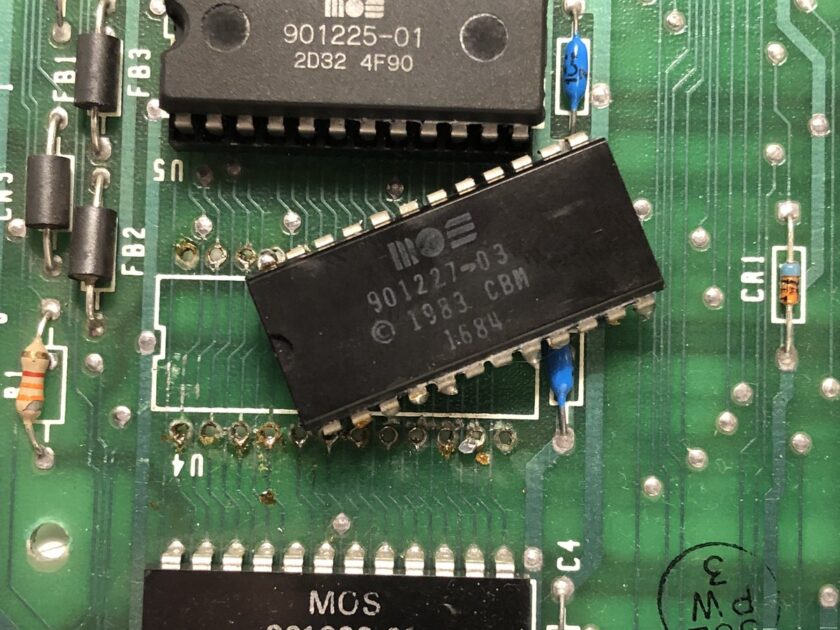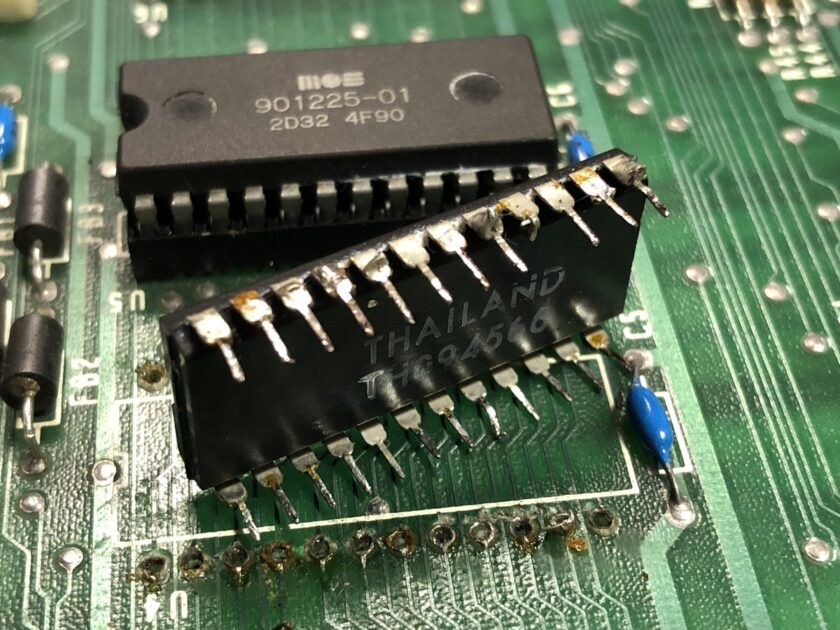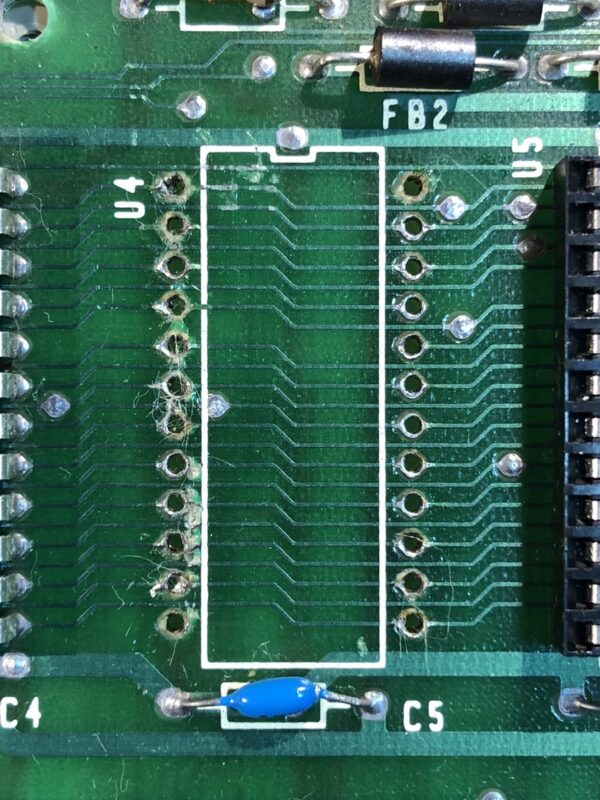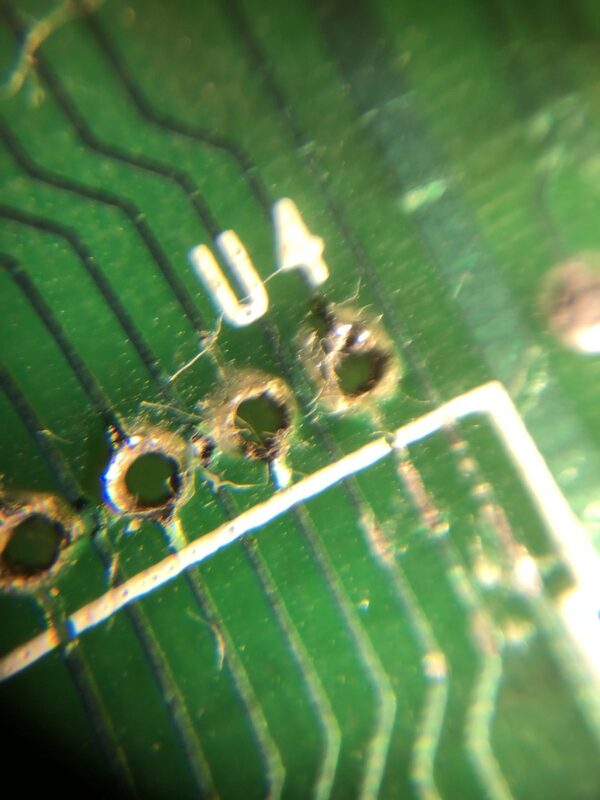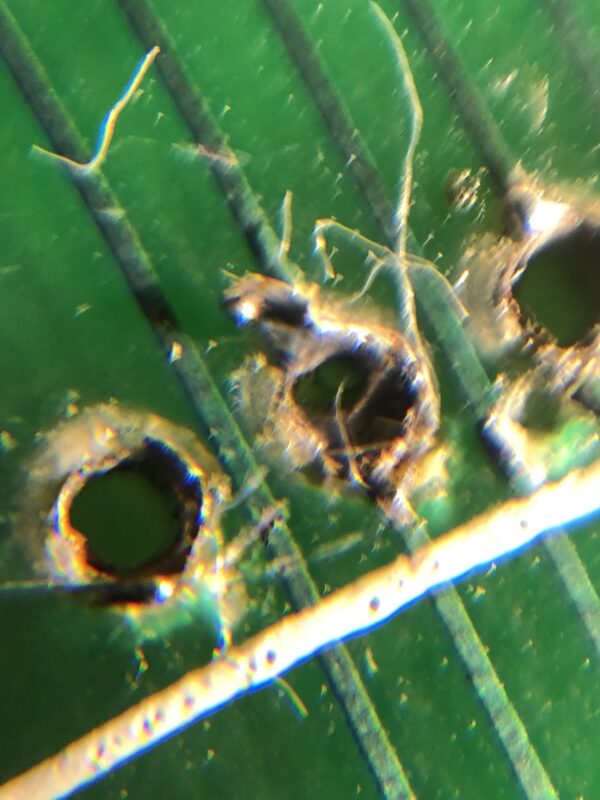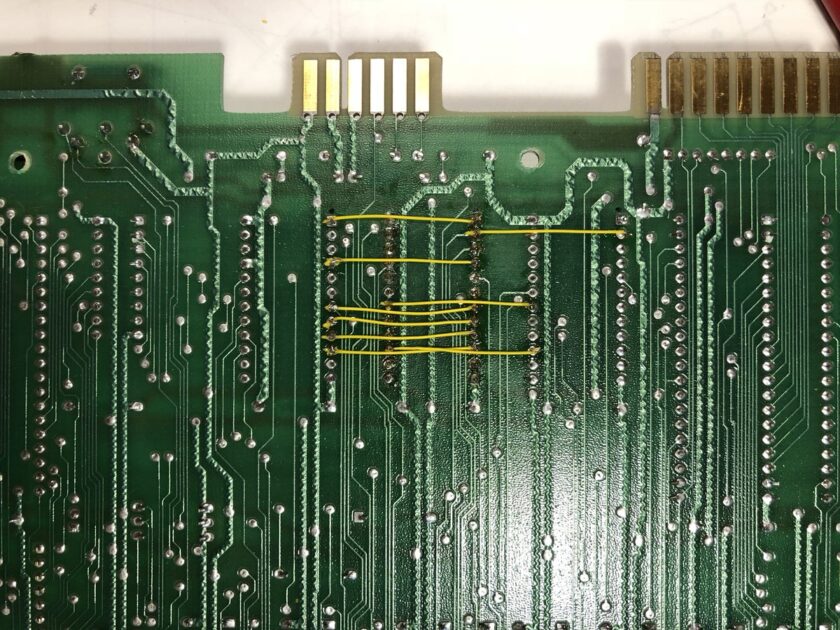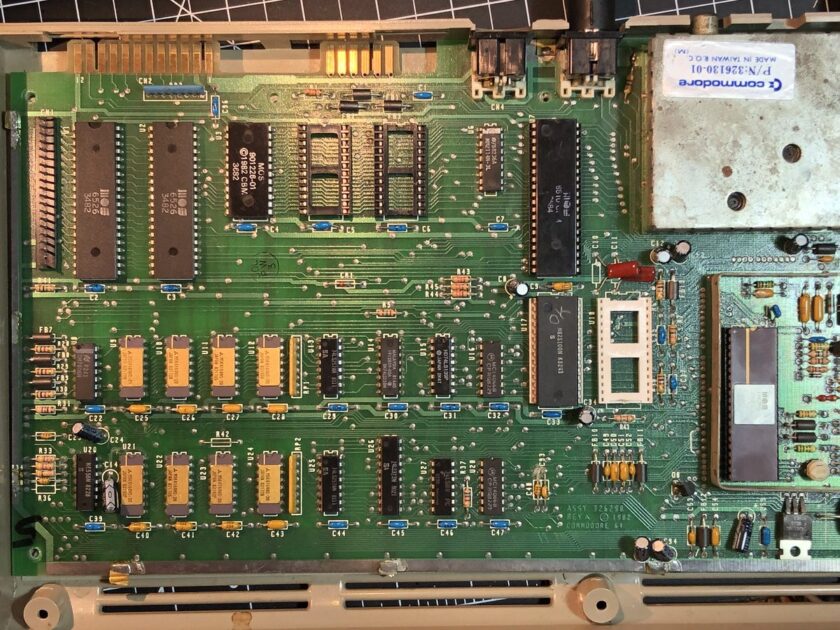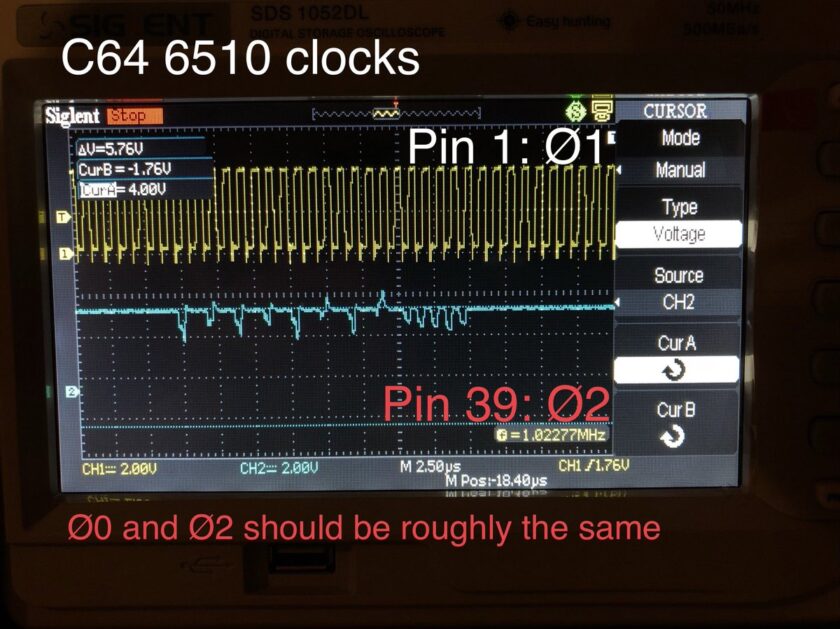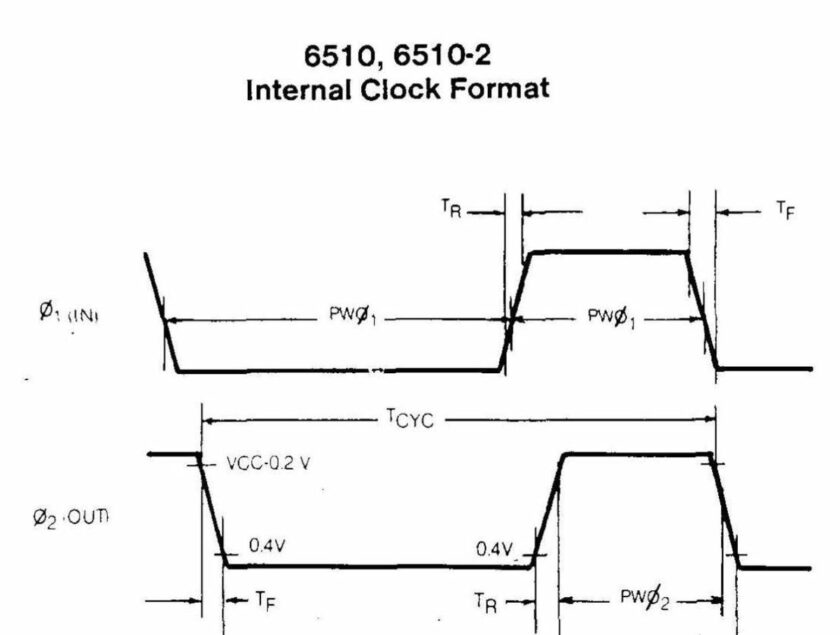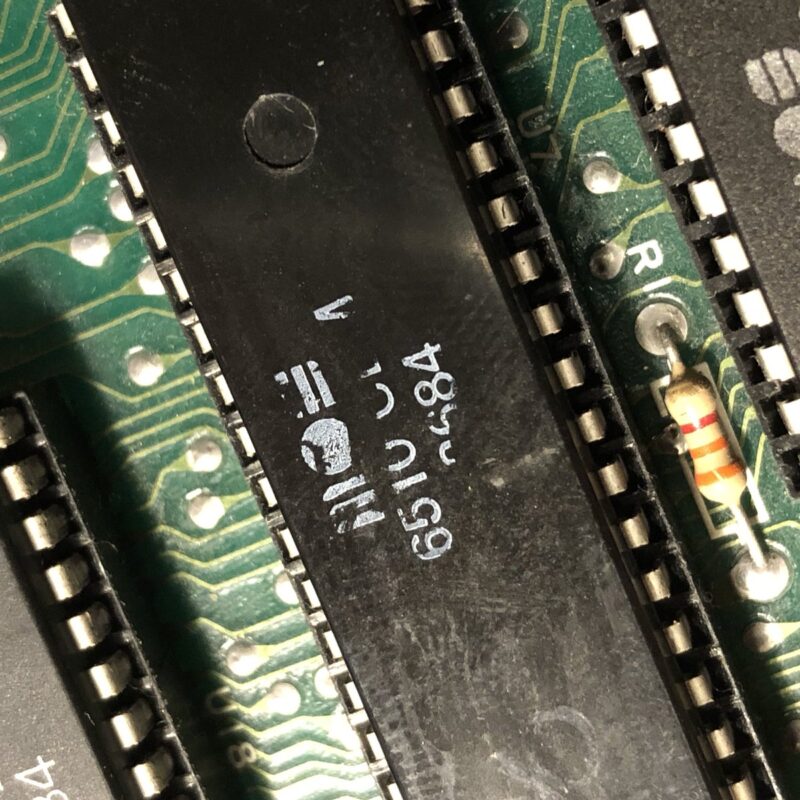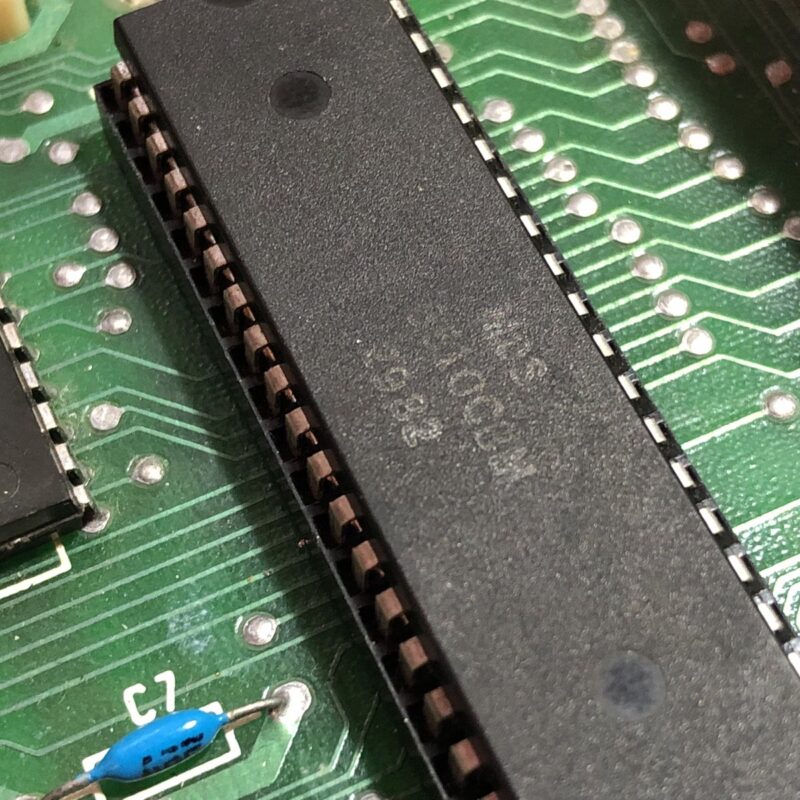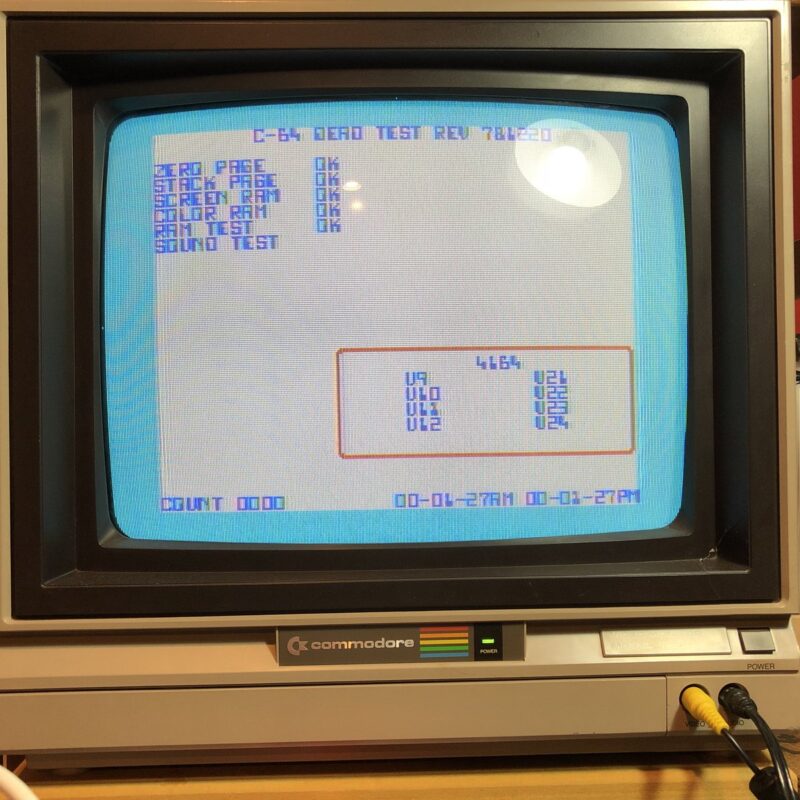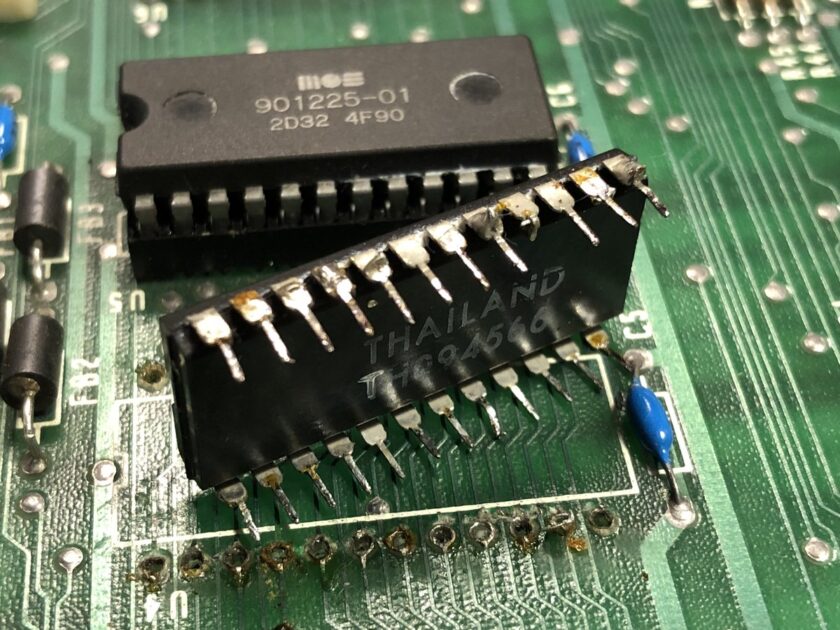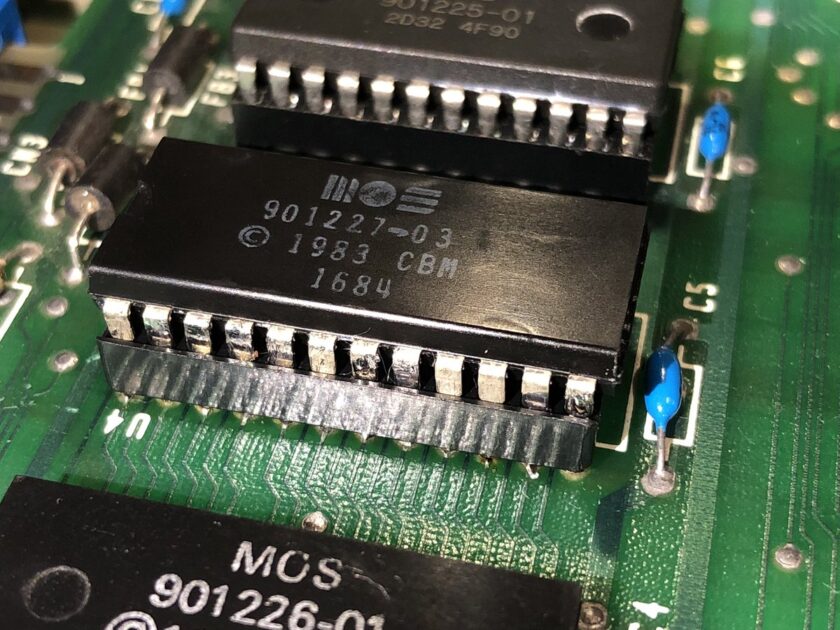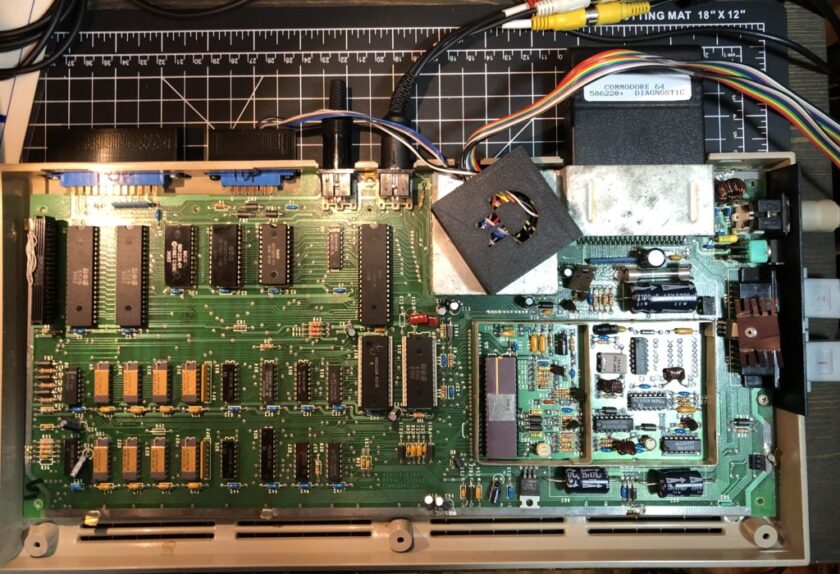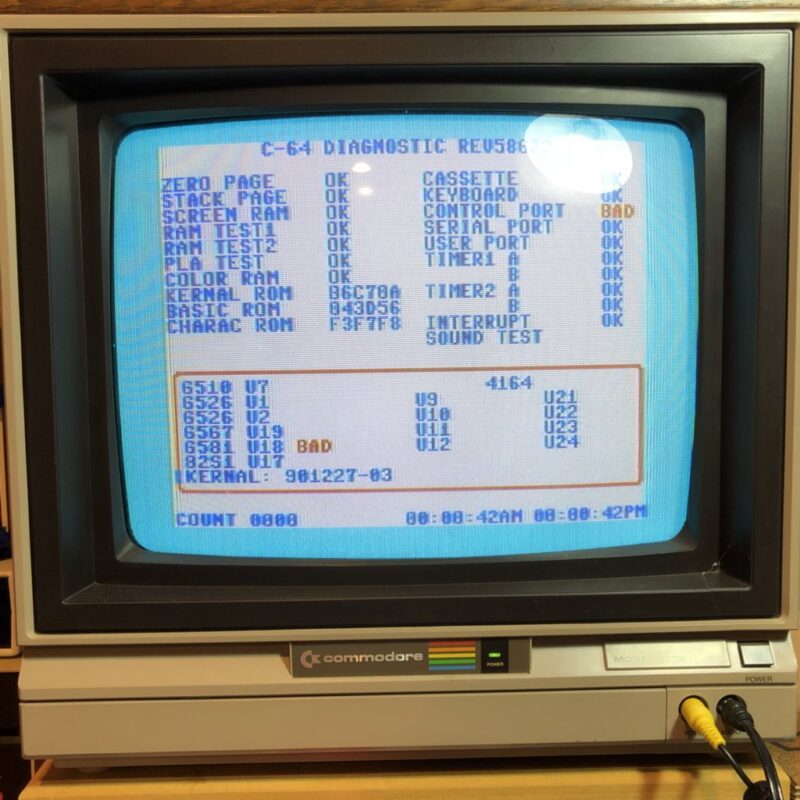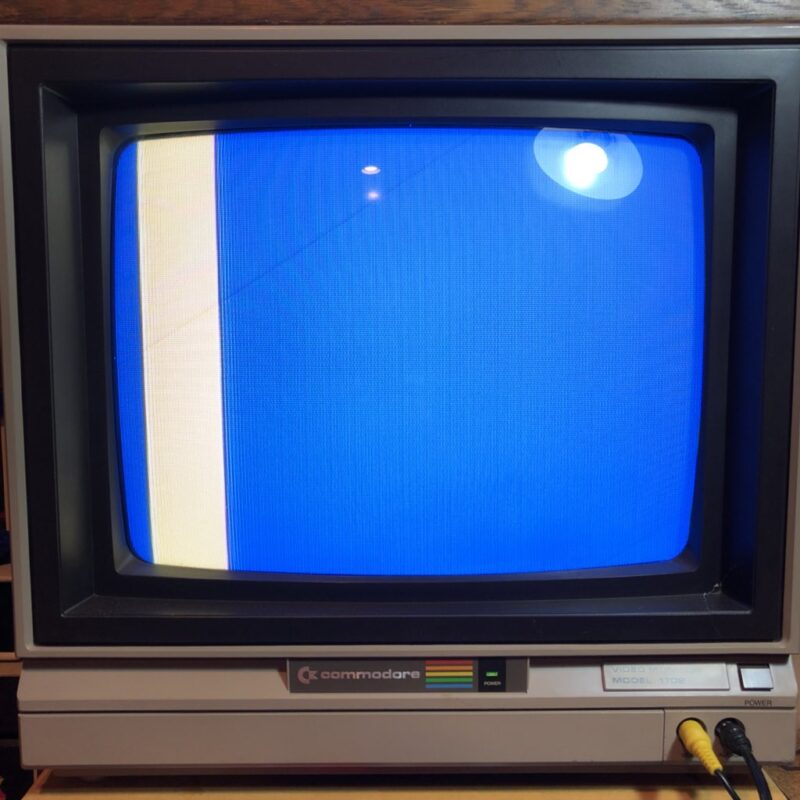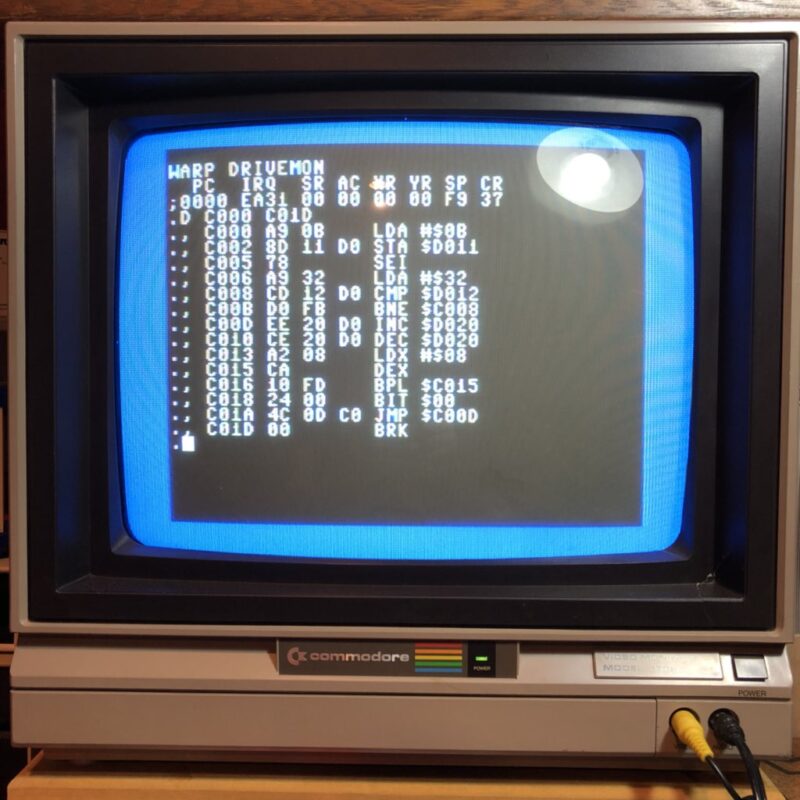(This was originally a Twitter thread from September 26, 2018)
September 26, 2018
Next on the bench is an early #c64, 1982 original motherboard with 5 pin video out and a lovely ceramic VIC-II. These tend to be tricky in my experience.
Problem is it boots to a black screen. Examining the board I see signs repair attempts. Date code here is 1983, likely not original.
That kernal has to go so I removed it. Pin 9 was bent under— it was not in the via. There was an attempt.
There’s actually no via anymore in some of these. The original chip was likely forcibly removed while still connected with some solder. Will need to tone these out and add bodges on the back to reconnect the damaged traces.
I’ve knitted the board back together with some bodges. The #c64 still won’t boot with the dead test cartridge. Remaining socketed chips (CPU, VIC-II, PLA) check out ok in another board.
September 29, 2018
Using the scope to look at some signals from this #c64. Here are the two phi clock pins on the 6510. They’re supposed to be roughly the same. Ø2 is not right.
AFAIU, Ø2 is generated by the 6510 so I’ll try swapping the CPUs with another one, even though this CPU did test ok in another board. Date codes (82 vs 84) seem to show perhaps the original owner swapped them?
From the C64 Service Manual, 6510 pin out, page 27, lists Phi2 pin 39 as Phase 2 output. “The processor generates this clock signal from the phase 1 clock”
The ‘82 CPU in the ‘82 motherboard and it has sprung to life! My question now, were there differences in early the 6510 that matched with early #c64 motherboards?
Remember that gnarly kernal I removed? I cleaned it up so we can give it ago. Maybe it’s still good?
Attached the #c64 diagnostic cart and harness and it looks great, save for SID missing voice 2 and no paddle inputs.
Thanks to 8-Bit Show And Tell for writing this prg— I’ve confirmed the VIC-II is the 64 cycle type, rather than 65 cycles like the newer.
